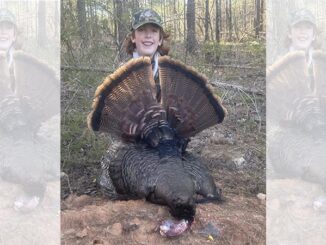
Turkey season is only a few weeks away for hunters in the Carolinas, and before opening day arrives, hunters can make several final adjustments to make their properties suitable for the breeding and nesting season.
It’s no coincidence that the deer and turkey seasons are centered around their breeding schedule. During the deer rut, the best place to kill a mature buck is often in the middle of the highest concentration of does — and turkey season is no different. Longbeards will gravitate towards areas holding hens.
Turkeys need a varied habitat, a mixture of mature woodlands, grasslands and fields. As breeding season approaches, hens will be living around a strong food source with prime nesting habitat close by. It might be a little late to plant a new food plot, but hunters can improve nesting habitat on their properties to encourage hens to stick around.
Hens prefer to nest along the edges of brushy fields and woodlots. Hens like brushy cover to lay their eggs, but they want a cleared area close by so they can see predators. Hunters can encourage nesting opportunities in transition areas between woodlands and fields or woodlands and brushy areas. There isn’t enough time to grow out the brush, but old fields and brushy areas already covered in overgrown vegetation can be worked mechanically to create a layered edge effect the hens love.
In areas where old fields or brushy areas meet mature woodlands, hunters can mow strips 20 to 30 feet from the wooded edge to create visibility along the edges for potential nesting habitat. For the best results, these mowed areas need to be at least 20 feet wide, but they could be significantly wider if the acreage is available. Not only do these areas encourage nesting opportunities in the edges, the open areas will provide strutting areas for breeding displays.
To encourage additional usage, these areas can be disked afterwards to expose the soil, encourage spring weed growth and provide a springtime food source.
It’s never too late or too early to enhance wildlife habitat even when turkey season is literally right around the corner.





Be the first to comment